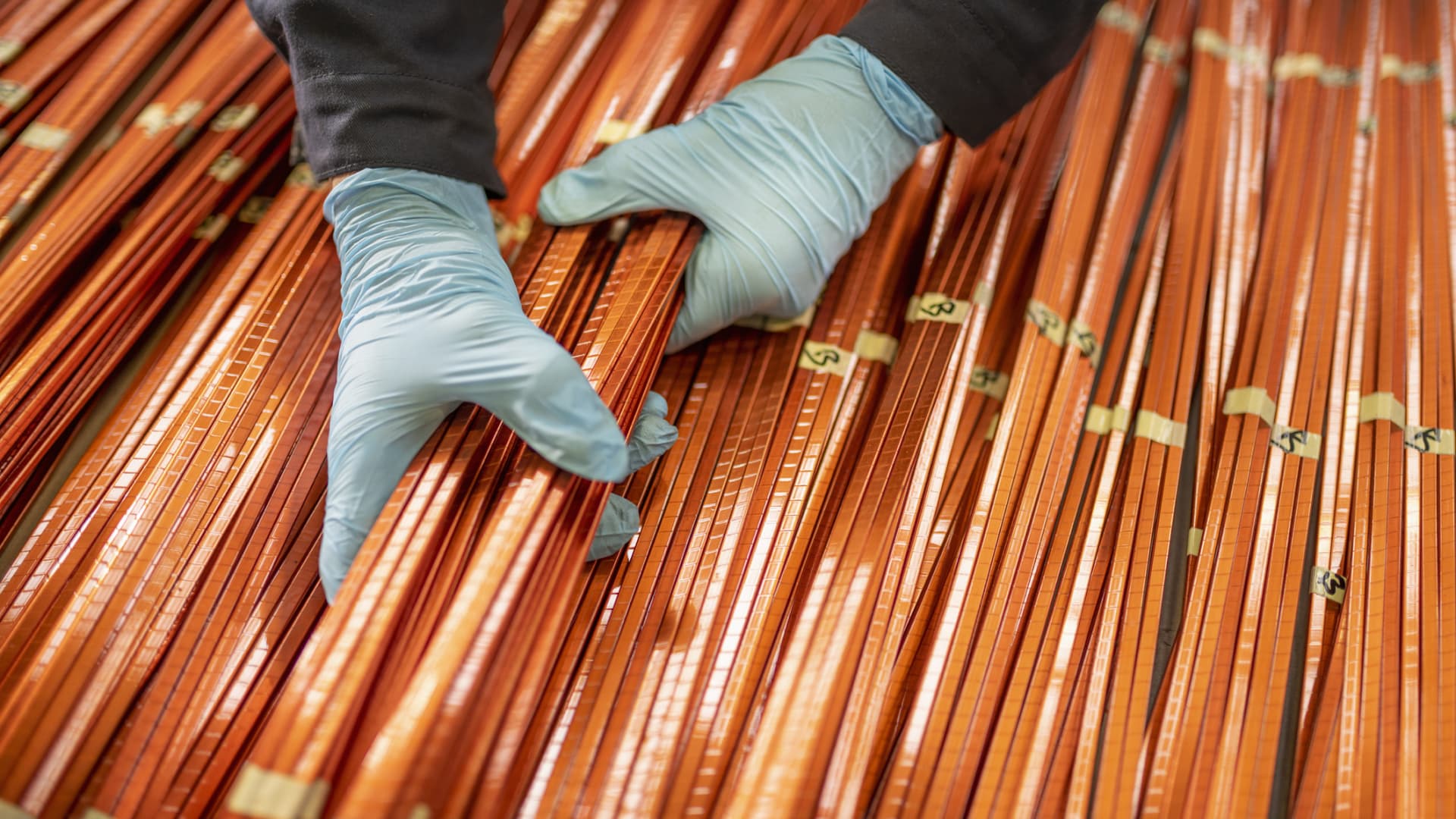The Alarming Surge: Analyzing the Impact of Trump’s 50% Copper Tariff
The announcement of a 50% tariff on copper imports by former President Trump sent shockwaves through global markets, triggering an immediate 11% surge in U.S. copper prices. This dramatic shift underscores the market’s sensitivity to trade policy and highlights the potential long-term implications for the U.S. economy, global trade dynamics, and the future of the copper market. The tariff’s impact extends beyond immediate price fluctuations, affecting production costs, inflation, and international trade relationships.
The immediate reaction to the tariff was a frenzy in the copper market. Reports indicated an 11% jump in U.S. copper prices, with CME contracts reaching $5.59. Some sources even noted a surge of up to 13% at one point, marking the largest single-day price surge in records. This volatility underscores the market’s sensitivity to trade policy and the immediate impact of tariffs on commodity prices. The U.S. copper premium over the global benchmark also soared, with one report suggesting an increase of 138%. This growing discrepancy created a situation where copper in the U.S. became significantly more expensive than anywhere else in the world.
The price spike had a multitude of implications for the U.S. economy. A primary concern is the rise in production costs for various industries. Copper is a crucial component in manufacturing, construction, electronics, and automotive sectors. Increased copper prices will inevitably translate into higher costs for these industries, potentially leading to reduced output and decreased competitiveness. Some reports even suggest that American factories have already experienced increased costs due to the tariff speculation.
Higher production costs can also fuel inflation. Businesses may pass on the increased costs to consumers in the form of higher prices, contributing to overall inflationary pressures within the U.S. economy. Although some sources claim Trump’s previous tariffs didn’t significantly boost inflation, a 50% tariff on a vital metal like copper could have a more pronounced impact. The construction industry, heavily reliant on copper for wiring and plumbing, could face significant challenges. Similarly, the automotive industry, particularly the rapidly growing electric vehicle (EV) sector, could experience increased production costs. The electronics industry, already grappling with supply chain issues, would also feel the pinch.
One potential, albeit undesirable, outcome is the disincentivization of copper use in the U.S. economy. As copper becomes more expensive, companies may explore alternative materials or implement strategies to reduce their reliance on copper. This shift could have implications for innovation and technological development. The tariff could lead to trade diversion, where countries shift their copper exports away from the U.S. to other markets. This could create shortages in certain regions and further disrupt global supply chains. One report suggests that with more copper heading to the U.S., shortages could hit China, the world’s largest copper consumer.
The imposition of tariffs often invites retaliatory measures from other countries. If other nations impose tariffs on U.S. exports in response, it could escalate into a full-blown trade war, harming various sectors of the U.S. economy. The tariff could significantly impact copper-producing nations that rely on the U.S. market. These countries may need to find alternative markets for their copper exports, potentially affecting their economies. Conversely, the tariff could create opportunities for countries that are not subject to the tariff. These nations could gain a competitive advantage in the U.S. market, potentially increasing their market share.
The copper market is a complex interplay of supply, demand, and speculation. Trump’s tariff introduces a new layer of complexity, potentially exacerbating existing challenges. The global copper market is already facing potential supply constraints due to various factors, including declining ore grades, geopolitical instability, and environmental regulations. The tariff could further tighten supply in the U.S., driving prices even higher. On the demand side, several factors are driving increased copper consumption, including the growth of renewable energy, the electrification of transportation, and the expansion of infrastructure in developing countries. The increasing demand from technologies like generative AI, with its high electricity needs, is also a significant factor.
The tariff has fueled speculation in the copper market, with investors betting on further price increases. This speculation can exacerbate price volatility and create uncertainty for businesses. Companies might start stockpiling copper to avoid future price increases. Despite the current price surge, some sources predict a potential copper surplus in the coming years. However, this prediction is contingent on the negative impacts of the U.S. tariffs outweighing supply constraints.
Predicting the future of the copper market in the face of Trump’s tariff is a challenging task. Several factors will determine the ultimate impact. The duration of the tariff will be a key determinant of its long-term effects. If the tariff is short-lived, its impact may be limited. However, if it remains in place for an extended period, it could have more significant and lasting consequences. Global economic conditions will also play a crucial role. A strong global economy could support copper demand, mitigating the impact of the tariff. Conversely, a weak global economy could exacerbate the negative effects.
Technological innovation could also reshape the copper market. The development of alternative materials or technologies that reduce copper consumption could lessen the impact of the tariff. The policy responses of other countries and international organizations will be critical. Retaliatory measures, trade agreements, and other policy interventions could significantly alter the landscape. The future of copper, and indeed the broader U.S. economy, may well depend on the choices made in the coming months and years.

